Qingyu Song
The Multi-Query Paradox in Zeroth-Order Optimization
Sep 19, 2025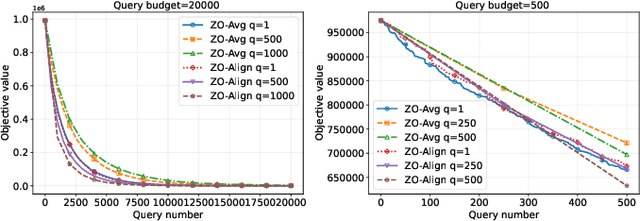
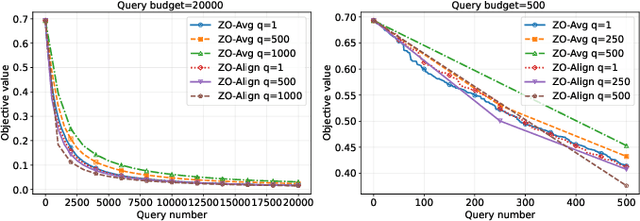
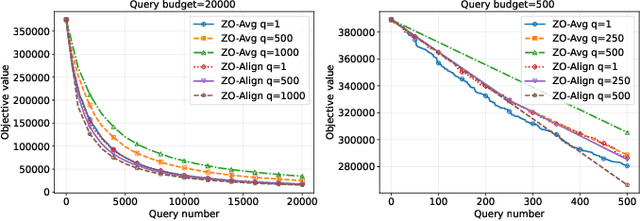
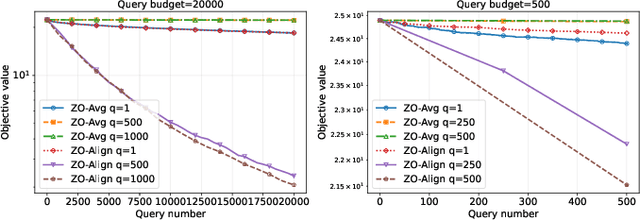
Abstract:Zeroth-order (ZO) optimization provides a powerful framework for problems where explicit gradients are unavailable and have to be approximated using only queries to function value. The prevalent single-query approach is simple, but suffers from high estimation variance, motivating a multi-query paradigm to improves estimation accuracy. This, however, creates a critical trade-off: under a fixed budget of queries (i.e. cost), queries per iteration and the total number of optimization iterations are inversely proportional to one another. How to best allocate this budget is a fundamental, under-explored question. This work systematically resolves this query allocation problem. We analyze two aggregation methods: the de facto simple averaging (ZO-Avg), and a new Projection Alignment method (ZO-Align) we derive from local surrogate minimization. By deriving convergence rates for both methods that make the dependence on the number of queries explicit across strongly convex, convex, non-convex, and stochastic settings, we uncover a stark dichotomy: For ZO-Avg, we prove that using more than one query per iteration is always query-inefficient, rendering the single-query approach optimal. On the contrary, ZO-Align generally performs better with more queries per iteration, resulting in a full-subspace estimation as the optimal approach. Thus, our work clarifies that the multi-query problem boils down to a choice not about an intermediate query size, but between two classic algorithms, a choice dictated entirely by the aggregation method used. These theoretical findings are also consistently validated by extensive experiments.
Towards Robust Learning to Optimize with Theoretical Guarantees
Jun 17, 2025Abstract:Learning to optimize (L2O) is an emerging technique to solve mathematical optimization problems with learning-based methods. Although with great success in many real-world scenarios such as wireless communications, computer networks, and electronic design, existing L2O works lack theoretical demonstration of their performance and robustness in out-of-distribution (OOD) scenarios. We address this gap by providing comprehensive proofs. First, we prove a sufficient condition for a robust L2O model with homogeneous convergence rates over all In-Distribution (InD) instances. We assume an L2O model achieves robustness for an InD scenario. Based on our proposed methodology of aligning OOD problems to InD problems, we also demonstrate that the L2O model's convergence rate in OOD scenarios will deteriorate by an equation of the L2O model's input features. Moreover, we propose an L2O model with a concise gradient-only feature construction and a novel gradient-based history modeling method. Numerical simulation demonstrates that our proposed model outperforms the state-of-the-art baseline in both InD and OOD scenarios and achieves up to 10 $\times$ convergence speedup. The code of our method can be found from https://github.com/NetX-lab/GoMathL2O-Official.
* Published in CVPR 2024, 55 pages, 17 figures, this version fixed some typo
Harnessing On-Device Large Language Model: Empirical Results and Implications for AI PC
May 22, 2025Abstract:The increasing deployment of Large Language Models (LLMs) on edge devices, driven by model advancements and hardware improvements, offers significant privacy benefits. However, these on-device LLMs inherently face performance limitations due to reduced model capacity and necessary compression techniques. To address this, we introduce a systematic methodology -- encompassing model capability, development efficiency, and system resources -- for evaluating on-device LLMs. Our comprehensive evaluation, encompassing models from 0.5B to 14B parameters and seven post-training quantization (PTQ) methods on commodity laptops, yields several critical insights: 1) System-level metrics exhibit near-linear scaling with effective bits-per-weight (BPW). 2) A practical threshold exists around $\sim$3.5 effective BPW, larger models subjected to low-bit quantization consistently outperform smaller models utilizing higher bit-precision. 3) Quantization with low BPW incurs marginal accuracy loss but significant memory savings. 4) Determined by low-level implementation specifics power consumption on CPU, where computation-intensive operations spend more power than memory-intensive ones. These findings offer crucial insights and practical guidelines for the efficient deployment and optimized configuration of LLMs on resource-constrained edge devices. Our codebase is available at https://github.com/simmonssong/LLMOnDevice.
Harnessing Large Language Models Locally: Empirical Results and Implications for AI PC
May 21, 2025Abstract:The increasing deployment of Large Language Models (LLMs) on edge devices, driven by model advancements and hardware improvements, offers significant privacy benefits. However, these on-device LLMs inherently face performance limitations due to reduced model capacity and necessary compression techniques. To address this, we introduce a systematic methodology -- encompassing model capability, development efficiency, and system resources -- for evaluating on-device LLMs. Our comprehensive evaluation, encompassing models from 0.5B to 14B parameters and seven post-training quantization (PTQ) methods on commodity laptops, yields several critical insights: 1) System-level metrics exhibit near-linear scaling with effective bits-per-weight (BPW). 2) A practical threshold exists around $\sim$3.5 effective BPW, larger models subjected to low-bit quantization consistently outperform smaller models utilizing higher bit-precision. 3) Quantization with low BPW incurs marginal accuracy loss but significant memory savings. 4) Determined by low-level implementation specifics power consumption on CPU, where computation-intensive operations spend more power than memory-intensive ones. These findings offer crucial insights and practical guidelines for the efficient deployment and optimized configuration of LLMs on resource-constrained edge devices. Our codebase is available at https://github.com/simmonssong/LLMOnDevice.
Learning Provablely Improves the Convergence of Gradient Descent
Jan 30, 2025



Abstract:As a specialized branch of deep learning, Learning to Optimize (L2O) tackles optimization problems by training DNN-based solvers. Despite achieving significant success in various scenarios, such as faster convergence in solving convex optimizations and improved optimality in addressing non-convex cases, there remains a deficiency in theoretical support. Current research heavily relies on stringent assumptions that do not align with the intricacies of the training process. To address this gap, our study aims to establish L2O's convergence through its training methodology. We demonstrate that learning an algorithm's hyperparameters significantly enhances its convergence. Focusing on the gradient descent (GD) algorithm for quadratic programming, we prove the convergence of L2O's training using the neural tangent kernel theory. Moreover, we conduct empirical evaluations using synthetic datasets. Our findings indicate exceeding 50\% outperformance over the GD methods.
Adaptive Coordinate-Wise Step Sizes for Quasi-Newton Methods: A Learning-to-Optimize Approach
Nov 25, 2024Abstract:Tuning effective step sizes is crucial for the stability and efficiency of optimization algorithms. While adaptive coordinate-wise step sizes tuning methods have been explored in first-order methods, second-order methods still lack efficient techniques. Current approaches, including hypergradient descent and cutting plane methods, offer limited improvements or encounter difficulties in second-order contexts. To address these challenges, we introduce a novel Learning-to-Optimize (L2O) model within the Broyden-Fletcher-Goldfarb-Shanno (BFGS) framework, which leverages neural networks to predict optimal coordinate-wise step sizes. Our model integrates a theoretical foundation that establishes conditions for the stability and convergence of these step sizes. Extensive experiments demonstrate that our approach achieves substantial improvements over traditional backtracking line search and hypergradient descent-based methods, offering up to 7$\times$ faster and stable performance across diverse optimization tasks.
Rethinking Counting and Localization in Crowds:A Purely Point-Based Framework
Aug 07, 2021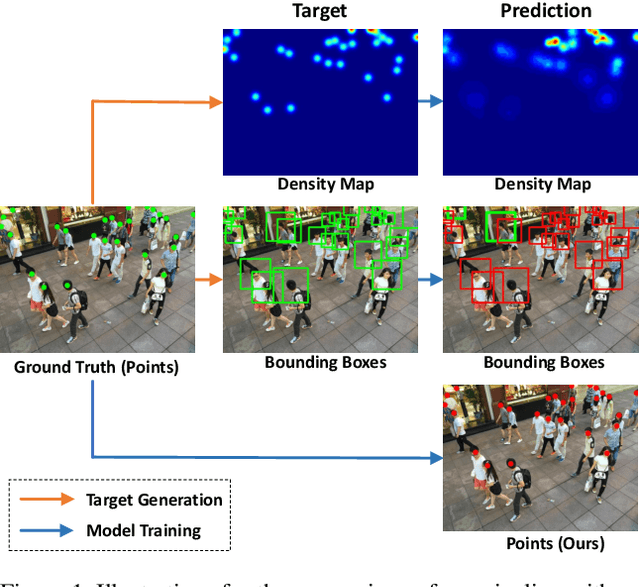
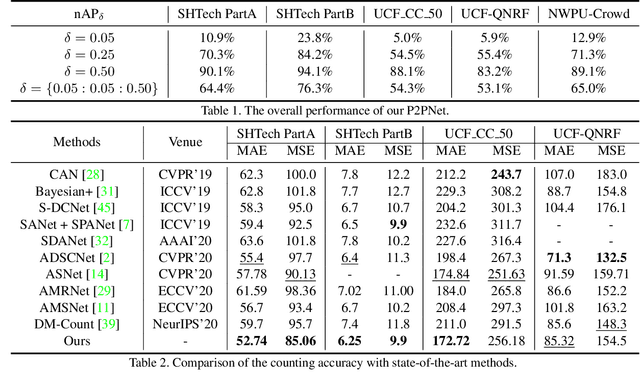
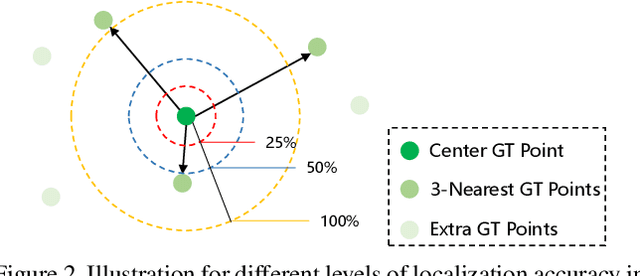
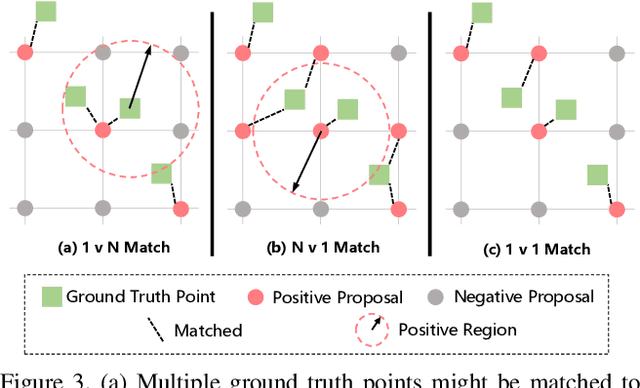
Abstract:Localizing individuals in crowds is more in accordance with the practical demands of subsequent high-level crowd analysis tasks than simply counting. However, existing localization based methods relying on intermediate representations (\textit{i.e.}, density maps or pseudo boxes) serving as learning targets are counter-intuitive and error-prone. In this paper, we propose a purely point-based framework for joint crowd counting and individual localization. For this framework, instead of merely reporting the absolute counting error at image level, we propose a new metric, called density Normalized Average Precision (nAP), to provide more comprehensive and more precise performance evaluation. Moreover, we design an intuitive solution under this framework, which is called Point to Point Network (P2PNet). P2PNet discards superfluous steps and directly predicts a set of point proposals to represent heads in an image, being consistent with the human annotation results. By thorough analysis, we reveal the key step towards implementing such a novel idea is to assign optimal learning targets for these proposals. Therefore, we propose to conduct this crucial association in an one-to-one matching manner using the Hungarian algorithm. The P2PNet not only significantly surpasses state-of-the-art methods on popular counting benchmarks, but also achieves promising localization accuracy. The codes will be available at: https://github.com/TencentYoutuResearch/CrowdCounting-P2PNet.
Uniformity in Heterogeneity:Diving Deep into Count Interval Partition for Crowd Counting
Aug 07, 2021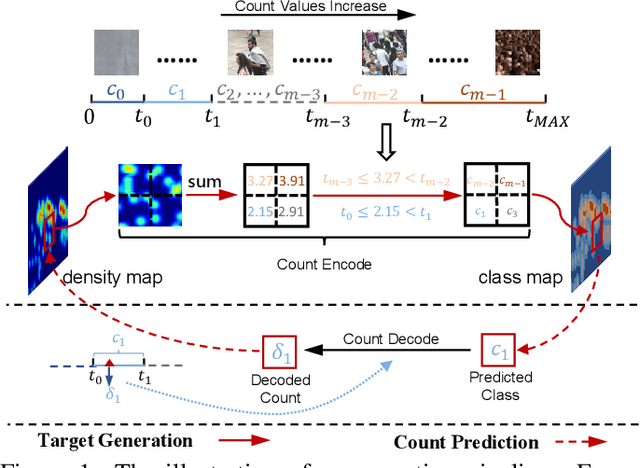
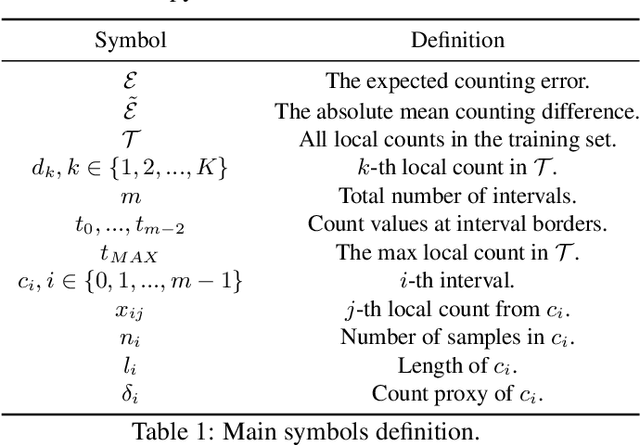

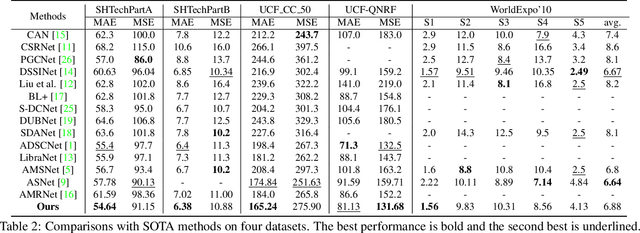
Abstract:Recently, the problem of inaccurate learning targets in crowd counting draws increasing attention. Inspired by a few pioneering work, we solve this problem by trying to predict the indices of pre-defined interval bins of counts instead of the count values themselves. However, an inappropriate interval setting might make the count error contributions from different intervals extremely imbalanced, leading to inferior counting performance. Therefore, we propose a novel count interval partition criterion called Uniform Error Partition (UEP), which always keeps the expected counting error contributions equal for all intervals to minimize the prediction risk. Then to mitigate the inevitably introduced discretization errors in the count quantization process, we propose another criterion called Mean Count Proxies (MCP). The MCP criterion selects the best count proxy for each interval to represent its count value during inference, making the overall expected discretization error of an image nearly negligible. As far as we are aware, this work is the first to delve into such a classification task and ends up with a promising solution for count interval partition. Following the above two theoretically demonstrated criterions, we propose a simple yet effective model termed Uniform Error Partition Network (UEPNet), which achieves state-of-the-art performance on several challenging datasets. The codes will be available at: https://github.com/TencentYoutuResearch/CrowdCounting-UEPNet.
 Add to Chrome
Add to Chrome Add to Firefox
Add to Firefox Add to Edge
Add to Edge